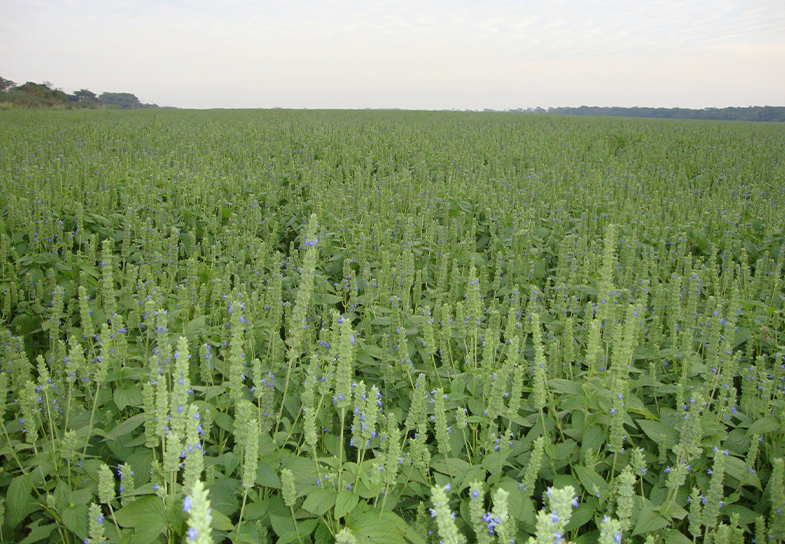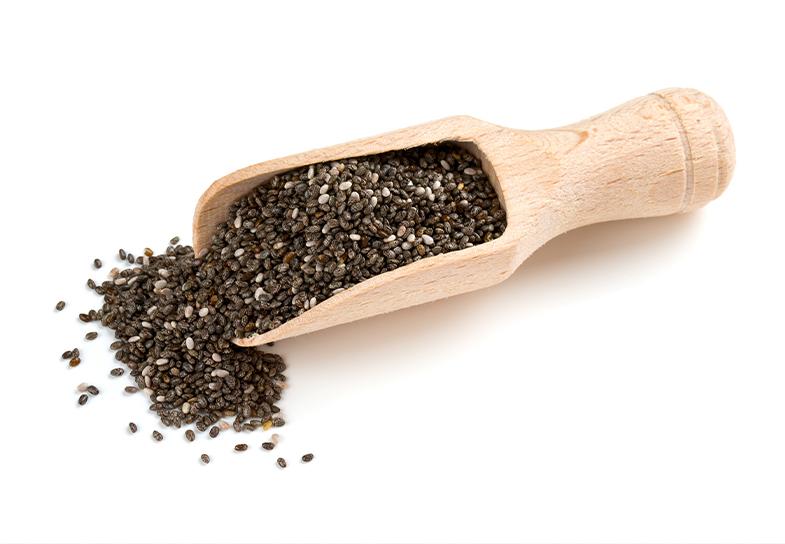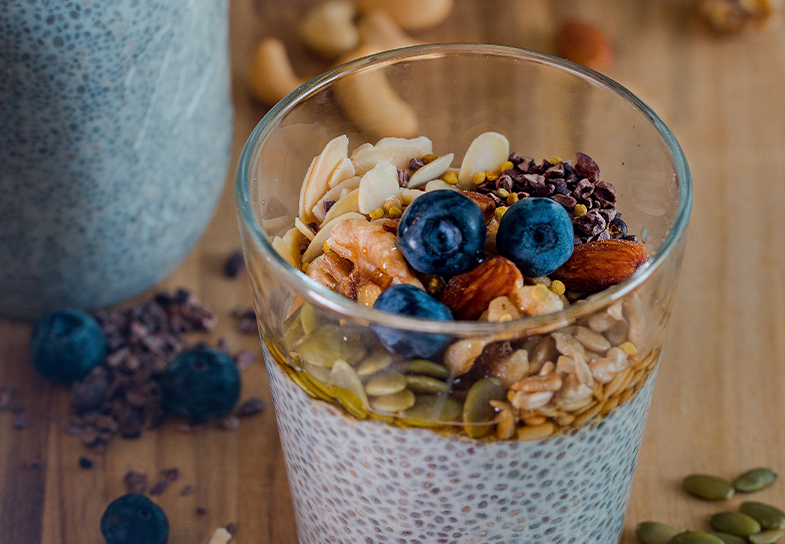Standard qualities
- Chia black available in conventional and organic quality

Plant
The chia plant is a species of plant from the sage genus within the mint family. It is an annual herbaceous plant that grows up to a hight of two meters. The very small, oval, smooth seeds develop from the predominantly violet flowers. The color spectrum ranges from brown to gray to black and has cracked spots and stripes. In the case of a white flower color, white seeds are also formed.

Origin and harvest
The origin of chia (salvia hispanica) is based in Mexico from where it has been cultivated in many other countries of South American countries, such as Paraguay. There is a sunny climate with little rainfall, so that a rich harvest can be brought in in June every year.

History and benefit
Chia has been known and loved for thousands of years. Even the indigenous peoples of Mexico cultivated chia as a staple food. It is known from the Aztecs that they mainly used the seeds as medicine, but also to make flour and oil out of it. Chia seeds dissolved in water were considered to strengthen hunters and warriors.
The seeds contain a high content of polyunsaturated fatty acids, in particular the valuable omega-3 and omega-6 fatty acids. In addition to fat, chia is also rich in proteins, vitamins and minerals such as calcium, phosphorus, zinc and potassium.

Use
Around the 16th century, the Aztec empire was crushed and so the Chia fell into oblivion. In 1997, Cirildo Chacarito, a man from the Tarahumara Indian tribe, won a 100 mile race in the United States. This tribe is known for its extraordinary long-distance runs, fueled during their runs with chia seeds dissolved in water. In 2009 the book “Born to run” was published and so the chia boom began.
Since chia is almost tasteless, it can be used anywhere. As a thickener in sauces or puddings, in smoothies or as a topping for muesli or salad, in bread or cake as an egg substitute.
Datasheets




